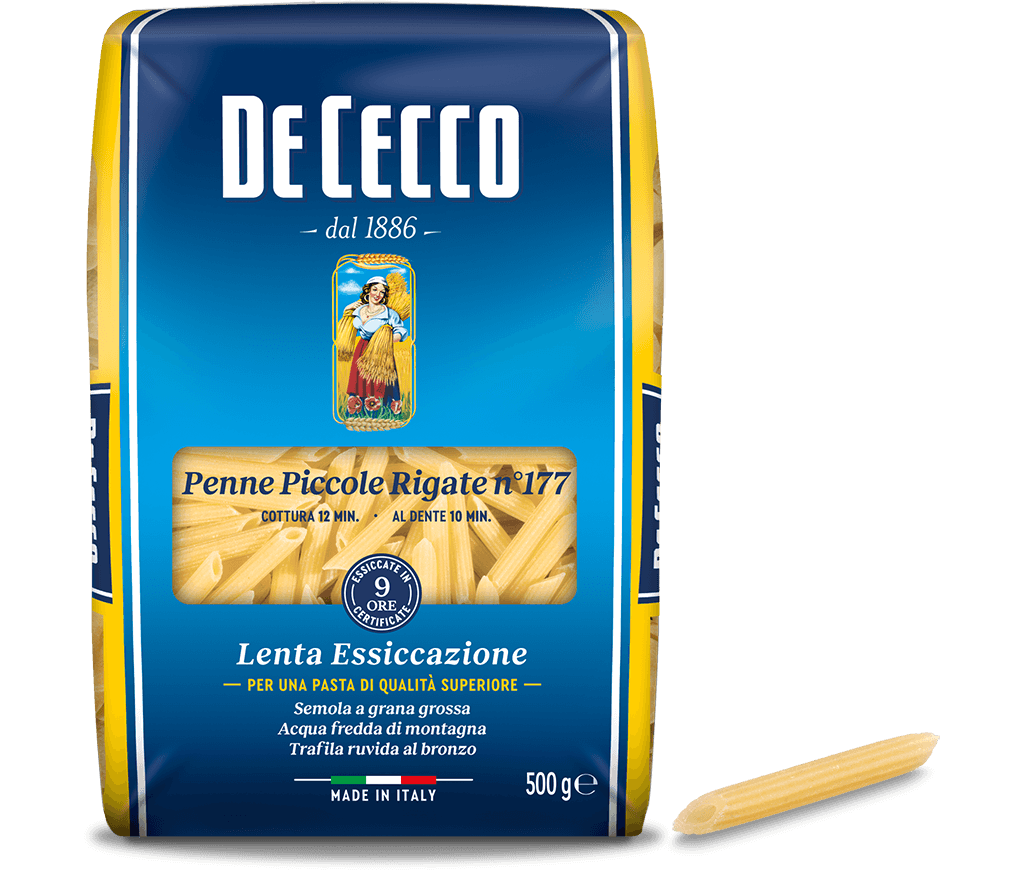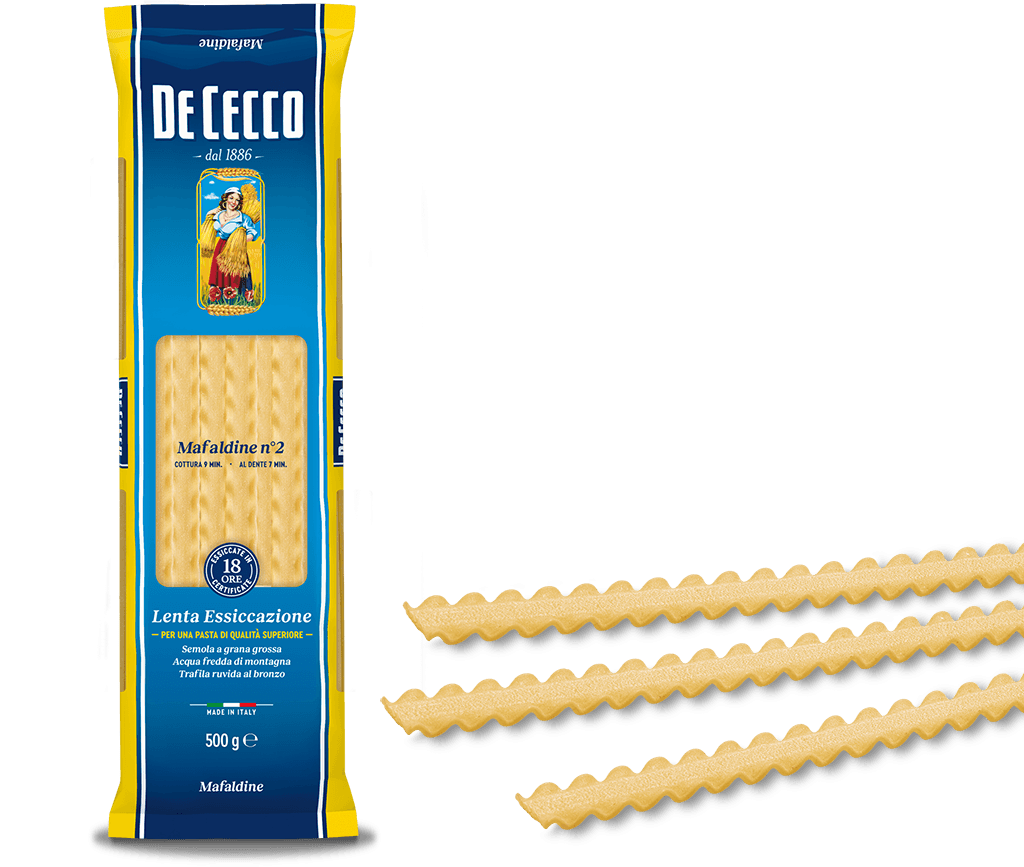Mafaldine n° 2
Mafaldine are part of the long, curled, dried pasta family due to their ribbon shape with curled edges on both sides.
They are also known as "Reginette" or "Reginelle" and come from the Naples area where they were once called "Fettuccelle Ricce". They were dedicated by the people of Naples to Princess Mafalda of Savoy and renamed Reginette (from the Italian word "regina" meaning queen) or Mafaldine in her honour.
Once curled pasta, like Mafaldine, have been cooked, they have a distinctive, uneven consistency which differs on the smooth and curled parts.
Another characteristic of this type of pasta is that the curled part can retain more sauce that the smooth part.
It is a fairly versatile type of pasta, so the sauces recommended for Mafaldine are: Neapolitan ragù with ricotta, game sauces, fish sauces made from shellfish and seafood or white sauces made from soft cheeses with the addition of curry, saffron, horseradish or ginger.
Available in 500g pack.s
- Cooking time: 9 min - Al dente: 7 min
Our method
Attention, care, experience, quality at every stage: from our mill to your table.
Fedelini n° 10






